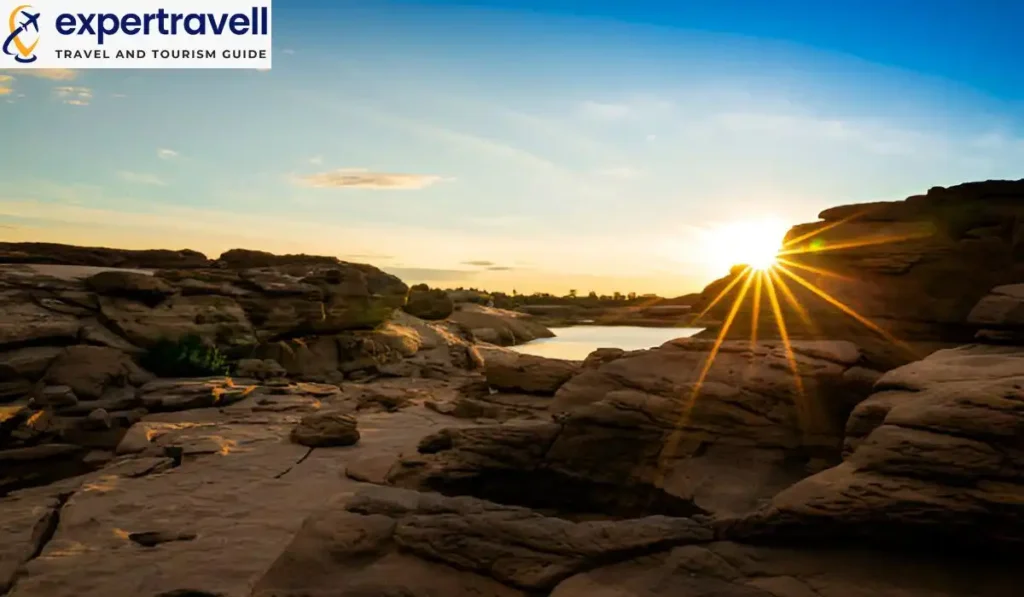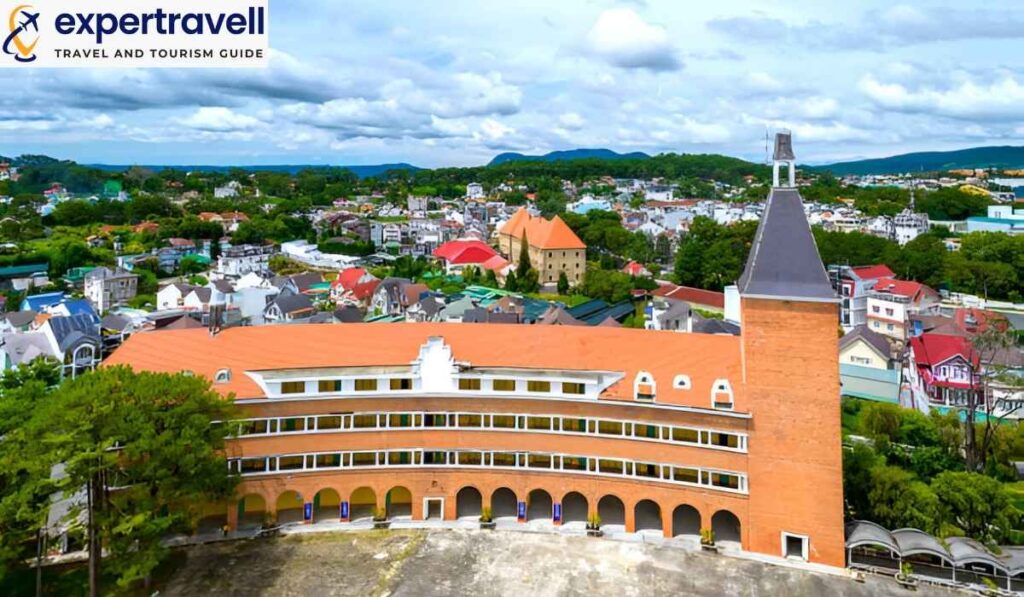The Grand Canyon is a natural wonder that draws millions of visitors each year. Its vast size and stunning beauty can be overwhelming, especially for those with limited time. Many people wonder if they can truly experience this magnificent place in just one day.
A well-planned visit to the Grand Canyon’s South Rim allows you to see the main highlights in a single day. By focusing on key viewpoints, short hikes, and efficient transportation, visitors can make the most of their brief time at this iconic national park.
To maximise a one-day trip, it’s important to start early and prioritise the most spectacular viewpoints. The South Rim offers breathtaking vistas, easy access to visitor facilities, and free shuttle buses that connect major attractions. With careful planning, travellers can create lasting memories and gain a deeper appreciation for the Grand Canyon’s awe-inspiring landscape, even in just 24 hours. If you’re looking for inspiration, the Best Places to Travel for Beginners can offer great ideas for those new to travel. Similarly, exploring one day in Cozumel can provide a fantastic way to make the most of a short getaway.
Choosing The Right Rim For A One-Day Visit
The Grand Canyon offers different experiences depending on which rim you visit. Your choice will shape your entire day trip.
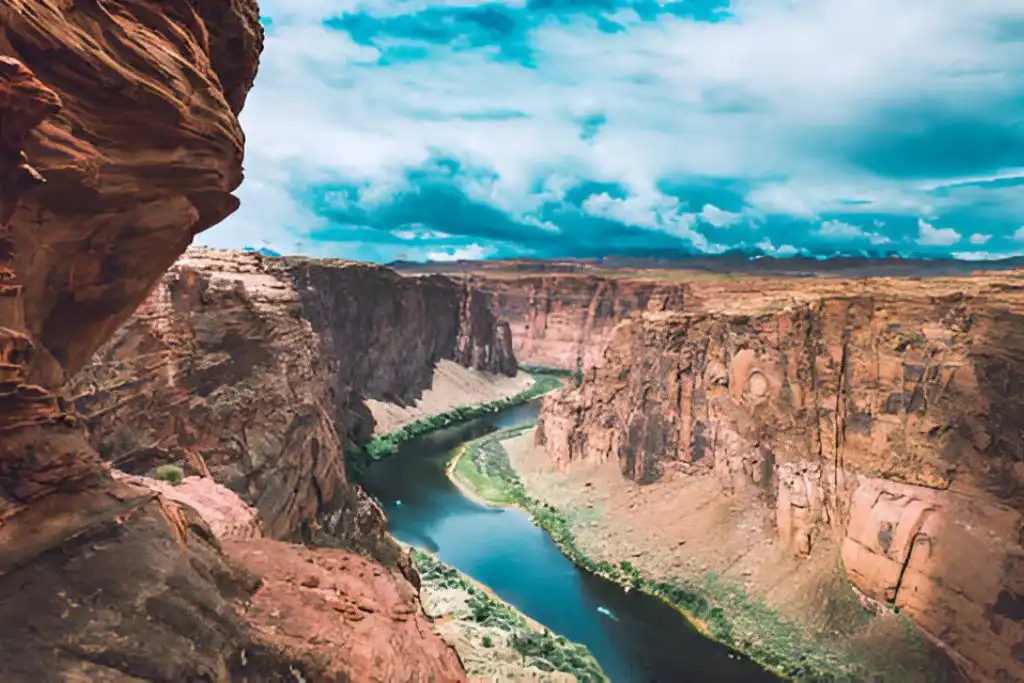
Overview Of The Rims
The Grand Canyon has three main rims: South, North, and West. Each rim has its own unique features and views. The South Rim is the most popular and accessible year-round. It offers many viewpoints and facilities. The North Rim is less crowded but closed in winter. It’s higher in elevation and has a more remote feel. The West Rim is closest to Las Vegas. It’s known for the Skywalk, a glass bridge over the canyon.
Pros And Cons Of Each Rim For Day Trips
South Rim:
- Pros: Open all year, many services, iconic views
- Cons: Can be crowded, especially in summer
North Rim:
- Pros: Less crowded, cooler temperatures
- Cons: Closed in winter, fewer facilities
West Rim:
- Pros: Closest to Las Vegas, Skywalk experience
- Cons: Not part of the national park, less natural feeling
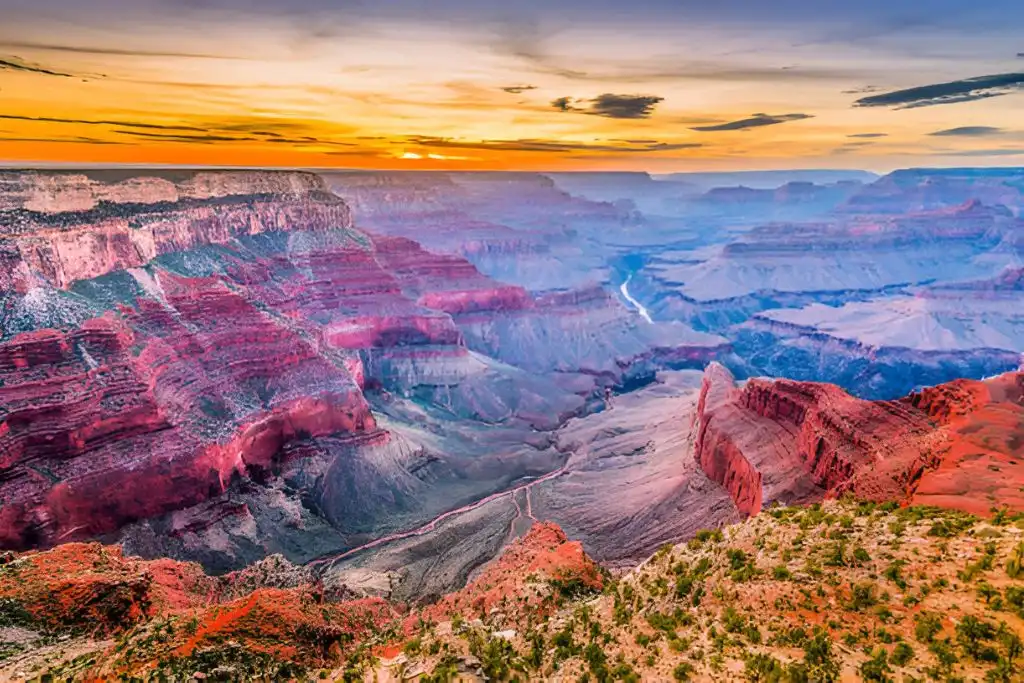
Recommended Rim: The South Rim
For a one-day visit, the South River is often the best choice. It offers the most things to see and do in a short time. The South Rim has many viewpoints along the rim. Visitors can easily drive or take a shuttle between them. Hiking options range from easy-paved trails to more challenging routes. The Bright Angel Trail and South Kaibab Trail offer great views for short hikes. Services like restaurants, shops, and visitor centres are readily available. This makes it easier to plan a full day of activities.
Best Time To Visit The Grand Canyon
The Grand Canyon offers unique experiences year-round, but certain seasons and times of day provide optimal conditions. Weather patterns and lighting greatly impact visitor enjoyment and photo opportunities.
Seasonal Guide
Spring and fall are ideal for visiting the Grand Canyon. Temperatures are mild, ranging from 50-75°F (10-24°C). These seasons offer comfortable hiking weather and smaller crowds. March to May brings blooming wildflowers and fresh greenery. The park is less busy, allowing for a more peaceful experience. September to November boasts crisp air and beautiful fall colours. This period is perfect for outdoor activities and sightseeing. Summer can be very hot and crowded. Winter brings cold temperatures and possible snow, but also stunning snow-covered vistas.
Best Times Of Day For Ideal Lighting
Early morning and late afternoon provide the most dramatic lighting for photos and views. Sunrise bathes the canyon in warm, golden light, creating breathtaking vistas. Midday sun can wash out colours and create harsh shadows. This time is better for hiking when temperatures are cooler. Sunset offers spectacular photo opportunities. The fading light paints the canyon walls in vibrant oranges, reds, and purples. Night visits reveal a star-filled sky. The park offers stargazing programmes, allowing visitors to experience the canyon’s beauty after dark.
How To Get To The Grand Canyon For A Day Trip
Getting to the Grand Canyon for a day trip requires some planning. The South Rim is the most accessible area for visitors. There are several ways to reach the canyon and explore its breathtaking views.
From Nearby Cities
Phoenix is about 3.5 hours from the South Rim by car. The drive offers scenic views of the Arizona desert. Las Vegas is roughly 4.5 hours away. Many tour companies offer day trips from Las Vegas to the Grand Canyon. Flagstaff, the closest major city, is only 1.5 hours from the South Rim. It’s a popular starting point for day trips. Visitors can rent a car or join a guided tour from here. Sedona, known for its red rocks, is about 2.5 hours away. The drive from Sedona passes through beautiful landscapes.
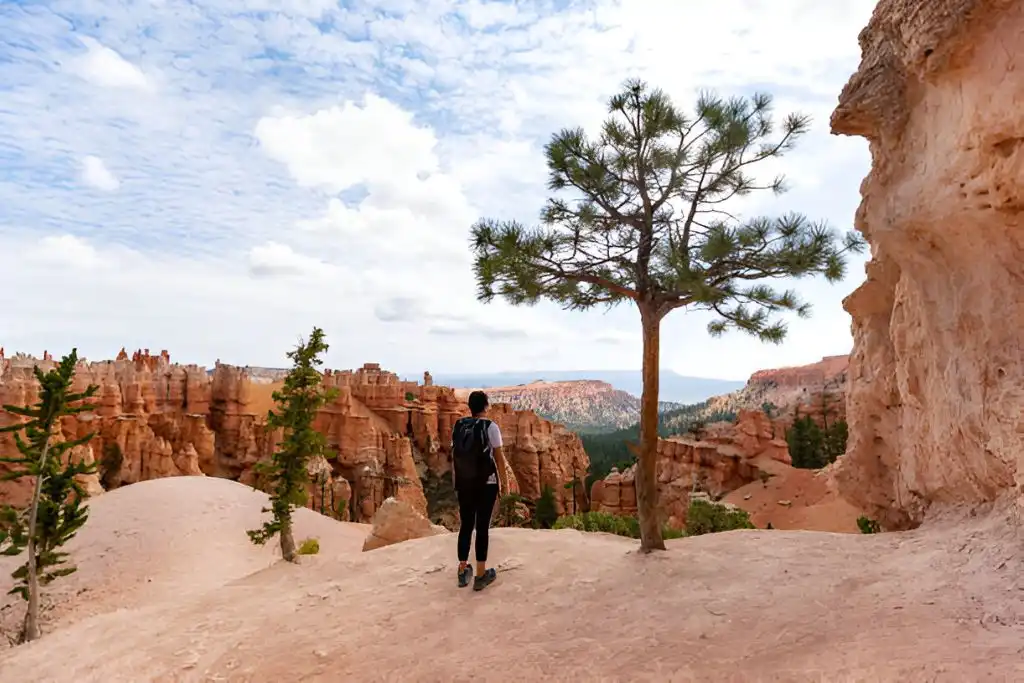
Transportation Options To The South Rim
Driving is the most flexible option. Visitors can purchase a Grand Canyon one-day pass at the entrance. The pass allows access to all areas of the park. Guided bus tours are available from nearby cities. These often include stops at key viewpoints and the visitor centre. Scenic train rides run from Williams, Arizona, to the South Rim. The journey takes about 2 hours and 15 minutes each way. Some companies offer helicopter tours from Las Vegas or the Grand Canyon Airport. These provide a unique aerial perspective of the canyon.
Getting Around The South Rim
The free shuttle bus system is the best way to explore the South Rim. Four routes cover different areas of the park. Buses run frequently and stop at major viewpoints and trailheads. Walking is ideal for short distances. The Rim Trail offers easy walks between viewpoints. Visitors can pick up Grand Canyon maps at the visitor centre. Bicycle rentals are available near the visitor centre. Biking is a fun way to see more of the rim in less time. Private vehicles can access some areas, but parking can be limited during busy times. The Hermit Road scenic drive is closed to private vehicles from March to November.
Top Activities To Experience In One Day
The Grand Canyon offers many ways to make the most of a single-day visit. From iconic viewpoints to short hikes and unique experiences, there’s something for every traveller to enjoy.
Must-See Viewpoints
Grand Canyon overlook spots provide stunning vistas of the vast canyon. Mather Point, near the Visitor Centre, offers an easy-to-access panoramic view. It’s often crowded but worth a stop. Yavapai Point gives a clear view of the Colorado River below. The geology museum here adds educational value to the experience. For sunrise or sunset, head to Hopi Point on the West Rim Drive. Its wide vantage point captures the changing colours beautifully. Desert View Watchtower, on the East Rim, combines scenery with history. Climb the tower for a 360-degree view of the canyon and painted desert beyond.
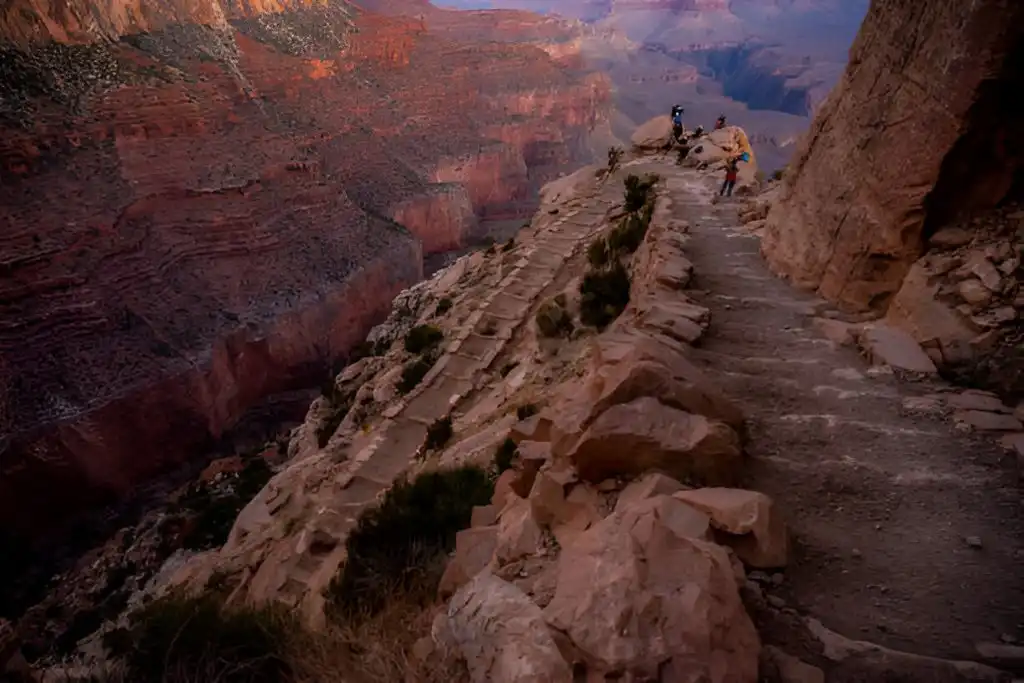
Rim Trail Walk
The Rim Trail is a paved path that follows the canyon’s edge. It’s mostly flat and ideal for all fitness levels. The trail connects many viewpoints, letting visitors walk between them at a leisurely pace. Shuttle buses run along the trail, allowing for easy return trips. Popular segments include the stretch from Mather Point to Yavapai Point, about 1 mile long. This section offers constant views and several rest areas. For a longer walk, try the 2-mile section from Verkamp’s Visitor Centre to Maricopa Point. This part of the trail is less crowded and equally scenic.
Best Short Hikes Below The Rim
Hiking below the rim gives a different perspective of the canyon’s scale. The Bright Angel Trail is a popular choice for day hikers. A 1.5-mile round trip to the First Resthouse offers a taste of the inner canyon. The trail is well-maintained but steep in parts.
For a slightly more challenging option, the South Kaibab Trail to Ooh Aah Point is a 1.8-mile round trip. It offers wider views than Bright Angel.
Both trails have steep drop-offs and little shade. Hikers should bring water, snacks, and sun protection. Start early to avoid midday heat.
Unique Activities For A One-Day Trip
A mule trip along the rim offers a distinctive way to see the canyon. These guided tours last about an hour and provide a gentle pace for sightseeing. The Grand Canyon Railway is another unique option. This historic train runs from Williams, Arizona, to the South Rim. It’s a full-day activity that includes entertainment. For a bird’s-eye view, helicopter tours depart from the South Rim. These short flights offer a thrilling perspective of the canyon’s vastness. Ranger-led programmes at the Visitor Centre cover topics from geology to wildlife. These free talks add depth to the Grand Canyon experience.
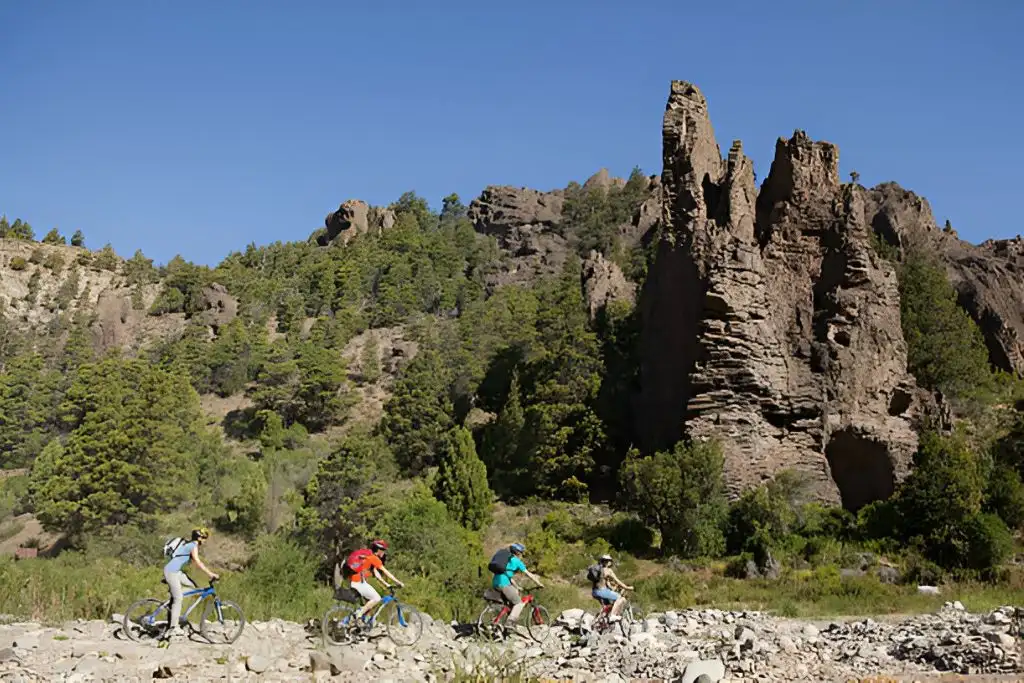
Biking Along Hermit Road
Renting bikes and cycling Hermit Road is a great way to see multiple viewpoints. The road is closed to private vehicles for most of the year, making it ideal for cyclists. Bright Angel Bicycles near the Visitor Centre offers rentals and guided tours. The full Hermit Road route is about 14 miles round trip. Cyclists can stop at viewpoints like Maricopa Point, Hopi Point, and Pima Point. The Abyss and Monument Creek Vista offer unique perspectives of the canyon. Biking allows visitors to cover more ground than walking. It’s a fun, active way to experience the rim’s beauty at your own pace.
Experiencing Sunrise, Sunset, And Stargazing
The Grand Canyon offers stunning views at different times of day. Visitors can see amazing colours and shadows during sunrise and sunset. At night, the dark skies reveal countless stars.
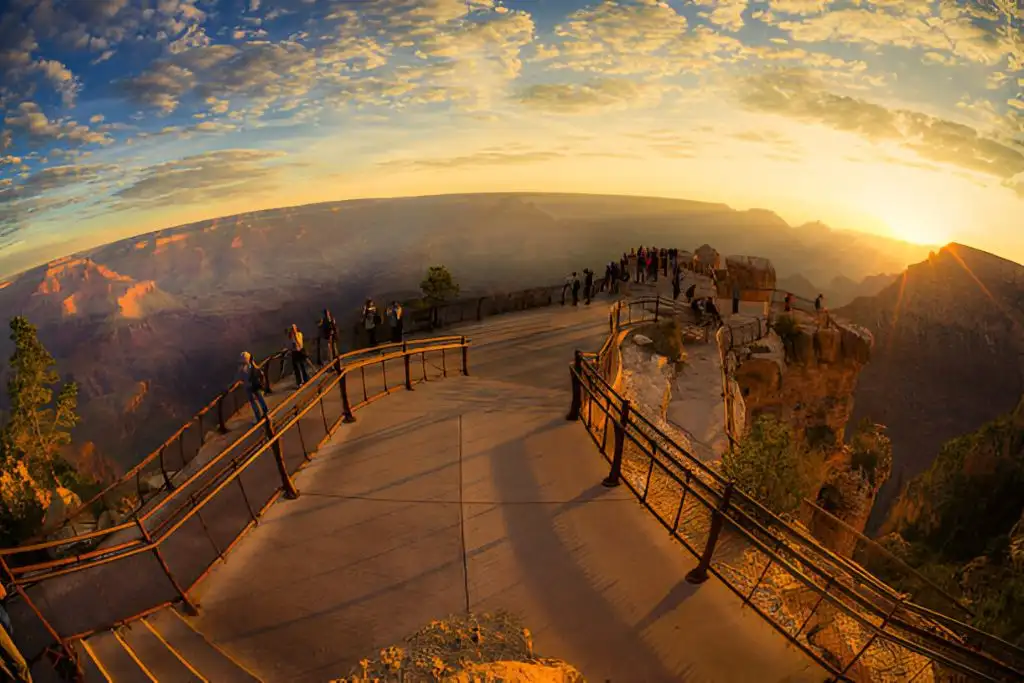
Sunrise At Mather Point
Mather Point is a popular spot for sunrise views. It’s easy to reach from the visitor centre. The sun lights up the canyon walls in shades of orange and red. Arrive early to get a good viewing spot. In summer, sunrise can be as early as 5:15 AM. In winter, it may not be until 7:30 AM. Bring warm clothes, even in summer. Mornings can be chilly. A camera is a must to capture the beautiful colours. Binoculars can help see distant parts of the canyon as they light up.
Sunset At Desert View Watchtower
Desert View Watchtower offers great sunset views. The tower is 25 miles east of the main visitor area. It sits on the canyon’s edge. As the sun sets, the canyon walls glow in warm colours. The light changes quickly, creating new views every minute. The tower itself becomes part of the view, standing dark against the colourful sky. Arrive at least 30 minutes before sunset. This gives time to find a good spot and set up cameras. Bring a jacket, as it can get cool after the sun goes down.
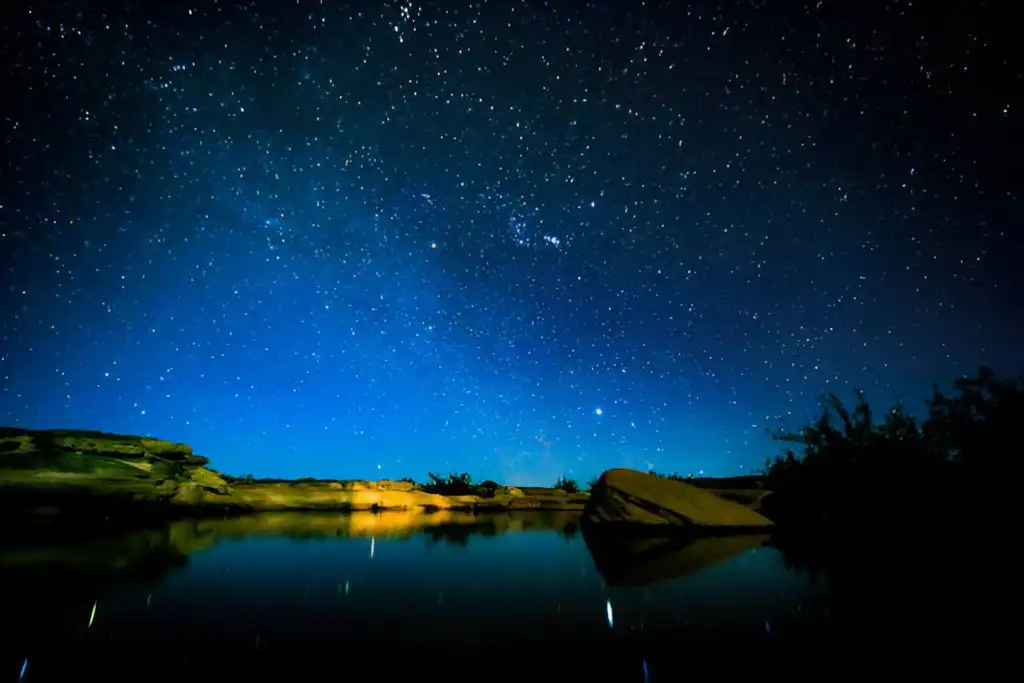
Stargazing At The Grand Canyon
The Grand Canyon is a great place for stargazing. It has very dark skies away from city lights. On clear nights, thousands of stars are visible. The best spots are away from buildings and lights. Yavapai Point and Desert View are good choices. Bring a red flashlight to protect your night vision. Summer offers warm nights for stargazing. Winter has longer nights but can be very cold. The Milky Way is visible in the summer months. Look for it stretching across the sky. Park rangers often lead stargazing programmes. These can teach about constellations and night sky features.
Photography Tips For A Day Visit
Capturing stunning photos at the Grand Canyon requires knowing the best viewpoints and ideal lighting conditions. These tips will help you make the most of your day trip photography.
Key Viewpoints And Angles For Stunning Photos
The South Rim offers several prime spots for photography. Mather Point provides a classic Grand Canyon vista, perfect for wide-angle shots. Yavapai Point offers unobstructed views of the inner canyon. It’s great for capturing the layered rock formations. For unique angles, try Ooh Aah Point on the South Kaibab Trail. This spot requires a short hike but rewards photographers with panoramic views. Hopi Point on Hermit Road is ideal for sunset shots. The wide vista allows photographers to capture the changing colours across the canyon.
Timing For Best Lighting
Golden hour lighting is key for dramatic Grand Canyon photos. This occurs just after sunrise and before sunset. Early morning light creates long shadows, adding depth to canyon photos. Photographers should arrive at their chosen viewpoint before sunrise. Late afternoon light bathes the canyon in warm tones. It’s perfect for capturing the red and orange hues of the rock layers. Midday light can be harsh, creating high contrast. This time is better for capturing details or using filters to balance exposure.
Suggested One-Day Itinerary: Grand Canyon Highlights
A well-planned day at the Grand Canyon allows visitors to experience its breathtaking beauty and diverse attractions. This itinerary covers key viewpoints, a short hike, and scenic spots to make the most of a single day at the South Rim.
Early Morning: Sunrise And Coffee At Mather Point
Start the day early at Mather Point, one of the most popular viewpoints. Arrive before sunrise to witness the canyon’s colours change as the sun rises. The view stretches for miles, revealing the vastness of the Grand Canyon. Bring a thermos of coffee to enjoy while taking in the scenery. The crisp morning air and stunning vistas provide a perfect start to the day. After sunrise, visit the nearby Grand Canyon Visitor Centre. Pick up maps and get updates on trail conditions and weather forecasts.
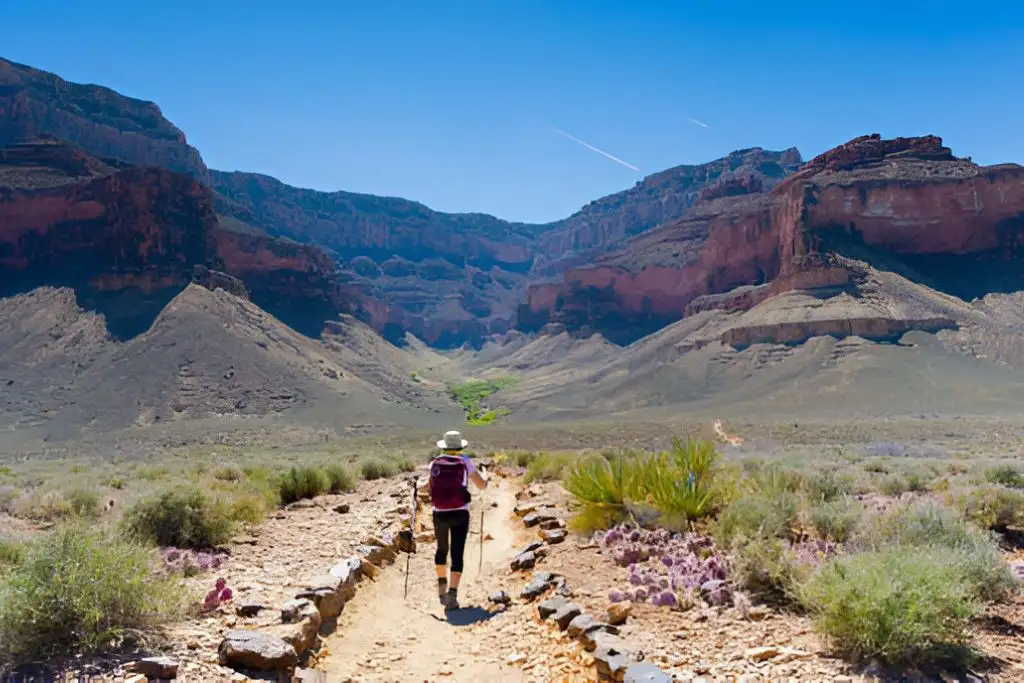
Mid-Morning: Short Hike On Bright Angel Trail
Head to the Bright Angel Trail for a taste of hiking in the canyon. This well-maintained trail offers shade and rest houses with water. For a quick trip, hike to the 1.5-mile resthouse and back. The round trip takes about 2-3 hours. Remember to bring water, snacks, and sun protection. The trail provides close-up views of the canyon’s geology and a chance to spot wildlife. Hikers should pace themselves and turn back if they feel tired.
Lunch Break Options
Several dining options are available for lunch. The Bright Angel Lodge offers casual dining with canyon views. For a quick meal, try the Maswik Lodge food court. Alternatively, pack a picnic lunch to enjoy at a scenic spot along the rim. Grocery stores in Grand Canyon Village sell supplies for a DIY meal. Remember to stay hydrated, especially after the morning hike. Refill water bottles at public water stations throughout the park.
Afternoon: Viewpoints And Museums
Spend the afternoon exploring more viewpoints and museums. Take the free shuttle bus along Hermit Road to see multiple viewpoints without driving. Stop at Hopi Point for panoramic views of the Colorado River. Visit the Yavapai Geology Museum to learn about the canyon’s formation. The Kolb Studio, once home to pioneering photographers, now houses art exhibits. It offers a unique perspective on the canyon’s history and culture.
Late Afternoon: Bike Ride Or Scenic Walk Along Rim Trail
Rent a bike to explore the Rim Trail. Cycling allows visitors to cover more ground and enjoy the changing views. Bike rentals are available at Bright Angel Bicycles near the visitor centre. For those who prefer walking, the paved Rim Trail offers easy access to viewpoints. Walk a section of the trail, stopping at overlooks to take photos and enjoy the scenery. Both options provide flexibility to explore at your own pace. Take breaks to rest and appreciate the surroundings.
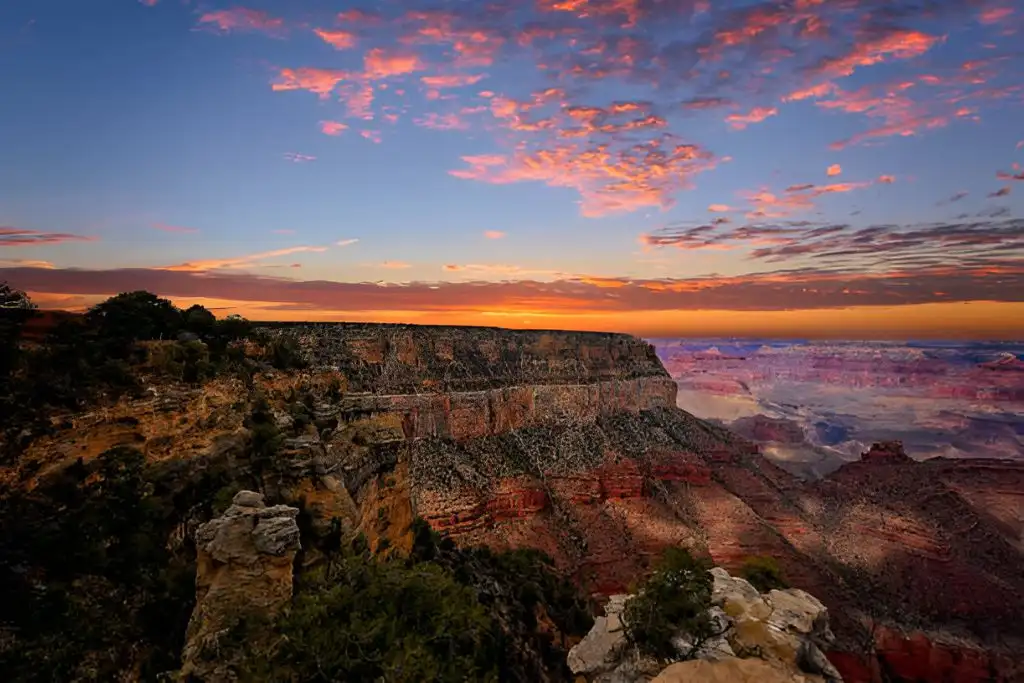
Sunset And Departure
End the day with a memorable sunset view. Hopi Point and Yavapai Point are popular sunset spots. Arrive early to secure a good viewing spot. Watch as the setting sun paints the canyon walls with warm hues. The changing light creates a dramatic display of shadows and colours. After sunset, head to Grand Canyon Village for dinner. The El Tovar Dining Room offers a fine dining experience, while the Arizona Room provides a more casual option. Reflect on the day’s experiences as you depart, having seen the Grand Canyon’s highlights in just one day.
Dining And Picnic Spots In The Grand Canyon
The Grand Canyon offers a mix of dining options and scenic picnic spots. Visitors can enjoy meals at on-site restaurants or pack a lunch to eat while taking in breathtaking views.
On-Site Dining Options
The Grand Canyon Village has several restaurants to choose from. El Tovar Dining Room serves upscale American cuisine with canyon views. For a casual meal, try the Bright Angel Restaurant or Maswik Food Court. The Arizona Room offers Southwestern dishes and panoramic vistas. Fred Harvey Burger serves quick bites near the rim. Phantom Ranch, at the canyon bottom, provides meals for hikers with advance reservations. Most dining facilities are open year-round, but hours may vary seasonally. It’s wise to check operating times before visiting.
Best Picnic Spots With Scenic Views
Hermit’s Rest is a top picnic spot with shaded tables and restrooms. It offers stunning views of the western canyon. Yaki Point provides a quiet place to eat with eastern canyon vistas. Cedar Ridge, on the South Kaibab Trail, is perfect for hikers looking for a scenic lunch break. Mather Point, near the Visitor Centre, has benches and wide views. It’s ideal for a quick snack while sightseeing. Shoshone Point offers a secluded picnic area reached by a short hike. It features picnic tables and grills with panoramic views. Remember to pack out all trash and follow Leave No Trace principles when picnicking in the park.
Where To Stay Near The Grand Canyon
Visitors to the Grand Canyon have several lodging options. These range from rustic cabins inside the park to comfortable hotels in nearby towns. Location and amenities vary widely between different accommodations.
Lodging Options Inside The Park
The South Rim offers several lodging choices within Grand Canyon National Park. El Tovar Hotel provides historic charm with upscale rooms and dining. Bright Angel Lodge has cosy cabins and budget-friendly rooms. Maswik Lodge offers motel-style units in a pine forest setting. Phantom Ranch, at the bottom of the canyon, provides dormitory-style and private cabins. Advance reservations are essential, especially for Phantom Ranch. Booking 13 months ahead is recommended for all in-park lodging. Camping is another option. Mather Campground has tent and RV sites. Desert View Campground offers more basic facilities. Both require reservations during peak seasons.
Nearby Accommodations Outside The Park
Tusayan, just 6 miles from the South Rim, is a popular place to stay near the Grand Canyon. It offers several hotels with comfortable amenities at better prices than in-park lodging. Options include Best Western Premier Grand Canyon Squire Inn and The Grand Hotel. Williams, about an hour’s drive from the park, provides a range of accommodations. It’s known for its historic Route 66 charm and the Grand Canyon Railway. Hotels here often offer good value and a small-town atmosphere. Flagstaff, 80 miles away, is the largest nearby city. It has many hotels, restaurants, and shops. While further from the canyon, it’s a good base for exploring other Arizona attractions.
Eco-Friendly Tips For Visiting The Grand Canyon
Visiting the Grand Canyon responsibly helps protect this natural wonder. Simple actions can make a big difference in preserving the park for future generations.
Leave No Trace Principles
The Leave No Trace principles are key to eco-friendly visits. Plan ahead and prepare for your trip. Stay on marked trails to avoid damaging fragile plant life. Pack out all trash, including food scraps. Use designated restrooms or pack out waste when hiking into the canyon. Respect wildlife by observing from a distance. Don’t feed animals, as this can harm their health and natural behaviours. Leave natural objects like rocks and plants where you find them.
Eco-Friendly Travel Tips
Choose eco-friendly transportation options. Take the free shuttle buses within the park to reduce traffic and emissions. Consider carpooling or joining a tour group to get to the Grand Canyon. Bring reusable water bottles and fill them at park water stations. Pack snacks in reusable containers to cut down on packaging waste. Use biodegradable sunscreen and insect repellent to protect the environment. Opt for rechargeable batteries in cameras and other devices. Support local businesses and buy souvenirs made by native artisans. This helps the local economy and reduces transportation impacts of imported goods.
Popular Grand Canyon Day Tours
Grand Canyon day tours offer exciting ways to see the park’s highlights. Visitors can choose from aerial views, guided hikes, and educational programmes.
Helicopter Tours
Helicopter tours give a bird’s-eye view of the Grand Canyon. These flights last 30-90 minutes. Guests see iconic sights like the North and South Rims, Kaibab National Forest, and Colorado River. Some tours land on the canyon floor. This allows time to explore hidden areas. Sunset flights are popular for their amazing views. Grand Canyon helicopter tours often include hotel pickup. Prices vary based on flight time and extras.
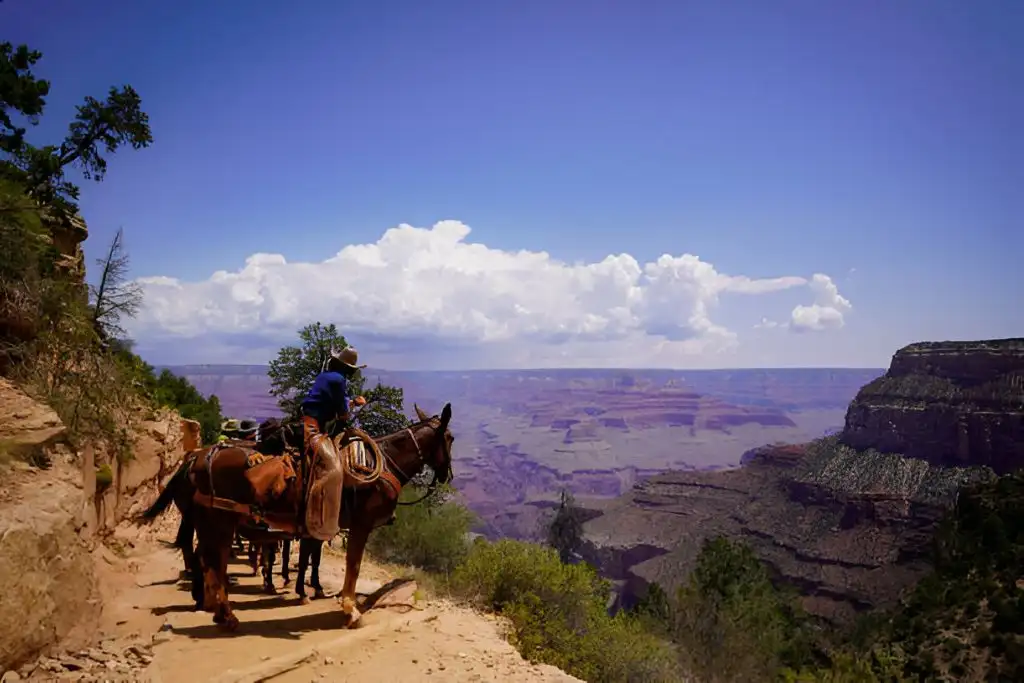
Guided Hikes And Mule Rides
Guided hikes let visitors explore the canyon safely. Park rangers lead many of these trips. They share info about geology, wildlife, and history. Popular trails include Bright Angel and South Kaibab. Hikes range from easy rim walks to tough inner canyon treks. Mule rides are a classic Grand Canyon experience. These trips go down into the canyon or along the rim. Guided tours by mule last anywhere from 1 hour to overnight stays. Both hikes and mule rides need advance booking. They often sell out in peak seasons.
IMAX And Ranger Programmes
The Grand Canyon IMAX theatre shows a film about the park’s history. It’s a good intro for first-time visitors. The movie runs hourly and lasts 34 minutes. Ranger programmes happen daily at various spots. Topics include geology, wildlife, and Native American history. These free talks last 20–60 minutes. Evening programmes often feature stargazing. Rangers use telescopes to show planets and constellations. Visitors can join these activities without booking ahead. They’re a great way to learn more about the park.
Practical Tips For A Successful Day Trip
A successful Grand Canyon day trip requires careful planning and preparation. These tips will help ensure a safe, enjoyable experience.
Packing Essentials
- Bring plenty of water for your Grand Canyon visit. Pack at least one gallon per person.
- Snacks and a picnic lunch are important. The park has limited food options.
- Wear comfortable walking shoes with good traction. Hiking boots are best for trails.
- Sun protection is crucial. Pack sunscreen, sunglasses, and a wide-brimmed hat.
- Bring layers of clothing. Temperatures can change quickly at the canyon.
- A small backpack is useful for carrying supplies while exploring.
- Don’t forget a camera to capture the stunning views.
Health And Safety Tips
- Stay on marked trails and behind safety railings at all times. The terrain can be dangerous.
- Start hikes early in the day to avoid the hottest temperatures.
- Take frequent breaks and drink water regularly, even if not thirsty.
- Watch for signs of heat exhaustion or altitude sickness. Symptoms include dizziness, headache, and nausea.
- Be aware of wildlife. Don’t approach or feed animals.
- Check weather forecasts before your trip. Be prepared for sudden changes.
- Tell someone your plans if hiking into the canyon.
Best Apps And Resources For Real-Time Updates
- The official Grand Canyon National Park app provides maps, trail information, and safety alerts.
- NPS.gov offers up-to-date information on park conditions and closures.
- Weather apps like AccuWeather give accurate local forecasts.
- AllTrails is useful for detailed trail maps and recent hiker reviews.
- Follow Grand Canyon National Park on social media for real-time updates.
- The Grand Canyon Shuttle app helps navigate the park’s free bus system.
- GasBuddy can locate nearby fuel stations for the drive to and from the park.
Frequently Asked Questions
How much does the Skywalk cost?
The Grand Canyon Skywalk costs around $25 per person, with additional fees for park entry and optional tours.
Is it free to see the Grand Canyon?
Yes, certain viewpoints are accessible for free, but the South Rim and other main areas typically require a park entrance fee.
Is Grand Canyon near Vegas?
Yes, the Grand Canyon is about a 2–4 hour drive from Las Vegas, depending on which rim you visit.
What is the best time to visit Grand Canyon?
The best times are spring (March–May) and fall (September–November) for pleasant temperatures and fewer crowds.
How long are Grand Canyon tours?
Tours vary from a few hours to full-day trips, with helicopter tours lasting around 45 minutes to 1 hour.
Can you see Hoover Dam and Grand Canyon the same day?
Yes, it’s possible! Many visitors stop at Hoover Dam on the way to the West Rim or South Rim from Las Vegas.
What is the best way to see the Grand Canyon?
The best way to experience it is by combining viewpoints, short hikes, and possibly a guided tour for a fuller perspective.
What can you do in 3 hours at the Grand Canyon?
In 3 hours, you can visit key viewpoints, explore a short trail, and capture stunning photos, especially at the South Rim.
Which part of Grand Canyon is best?
The South Rim is the most popular for its accessibility, stunning views, and visitor amenities.
How long is the Skywalk tour?
The Skywalk tour itself typically takes about 15–30 minutes, though the full experience, including exploration of the West Rim, may last a few hours.

